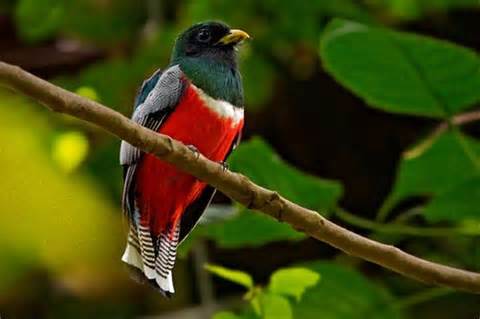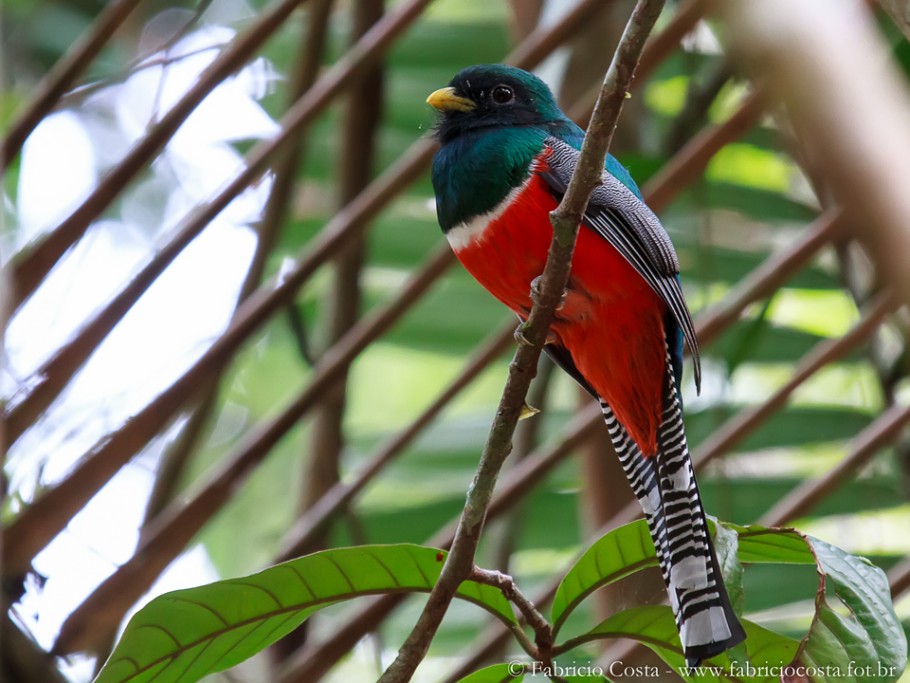
Trogon collaris
SUBFAMILY
Trogoninae
TAXONOMY
Trogon collaris Viellot, 1817, Cayenne. Eight subspecies.
OTHER COMMON NAMES
English: Bar-tailed trogon, ray-tailed trogon, red-bellied trogon;
French: Trogon rosalba; German: Jungferntrogon; Spanish:
Trogуn Acollarado, Sorocua Acollarado.
PHYSICAL CHARACTERISTICS
9.8–11.4 in (25–29 cm), 1.4–2.4 oz (40–70 g). Upperparts
greenish bronze, white breast band, red lower breast, blackish
face and throat, yellow bill, barred black and white undertail
and wingpanel.
DISTRIBUTION
South Mexico through Central America, Amazonian and
northeast coastal South America to southeast Brazil.
HABITAT
Lowland tropical evergreen forest, including cloud forest, rainforest,
gallery forest, and open woodlands, especially edges.
BEHAVIOR
Solitary, retiring.
FEEDING ECOLOGY AND DIET
Fruits and insects, including stick insects, beetles, and caterpillars.
Often found in mixed-species flocks.
REPRODUCTIVE BIOLOGY
Breeds January through June over range, as well as November
through December, in French Guiana; nests in shallow unlined
niche or cavity, occasionally termitaria; lays two or three eggs;
brood rearing little known.
CONSERVATION STATUS
Not threatened; most abundant and one of the broadest ranging
of trogons.
SIGNIFICANCE TO HUMANS
None known.
Photo Gallery of - Collared trogon




 Animalia Life
Animalia Life